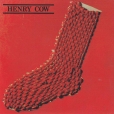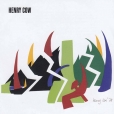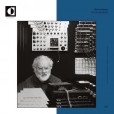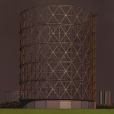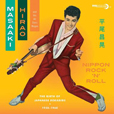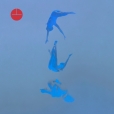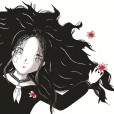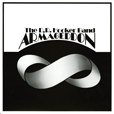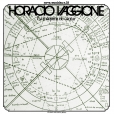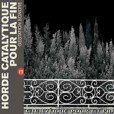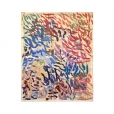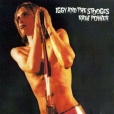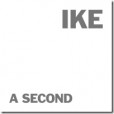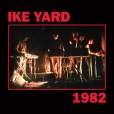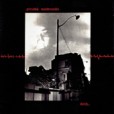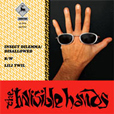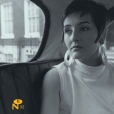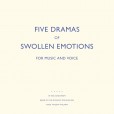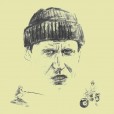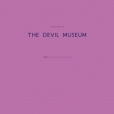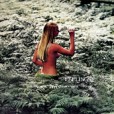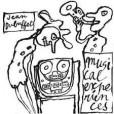Your basket is empty

Melodic, fragile, enchanting music for the trippy Juliette Greco film, plus rare bits and bobs. ‘Layered, looped vocals, gossamer female voices, plucked strings, white noise wind, brooding treated piano.’
Brothers Evgeny and Mikhail Gavrilov from Novosibirsk in Siberia.
You might remember Mikhail’s excellent cassette, Roots, which came out on Hive Mind in 2022, under the name Misha Sultan.
‘A little bit like a collaboration between Metalheadz and Weather Report, to accompany a seventies cop thriller.’
‘Sublime, ethereal minimalism: the first drawing together of Onogawa’s soundtrack compositions, plotting a decade of music for films by cult filmmaker Gakuryū Ishii.
‘Sequenced into an album by Onogawa himself, this retrospective spans a fertile period of collaboration with Ishii, through soundtracks for three remarkable films — August in the
Water (1995), Labyrinth of Dreams (1997), and Mirrored Mind (2005) — where the cinema is texturally and sensually imbued with the spiritual, ambient, dreamlike quality of Onogawa’s music.
‘The sound Onogawa conjures for these films is elegant and patient, often spare or essential in form, but saturated in a strange and otherworldly, poetic emotion and atmosphere. Boundaries are crossed between New Age and science fiction, passing through blissfulness, melancholy, and paranoia, towards enchantments of mood and colour.
‘It’s notable that the compositions on this album straddle the millennium, with a fitting mix of divine and uncertain themes. New listeners might hear links to Mark Snow’s work for the X-Files and Millennium, or the soundtracks of certain future-facing and future-fearing Japanese anime or cyberpunk.
‘Onogawa’s music adds great depth and tenor to the sensory experience of the films themselves, but it stands just as strongly as a listening experience on its own terms; a virtuosic example of Ambient that changes in hue when turned in the light. Remarkably, like Ishii’s films, Onogawa’s work has never been widely available outside of fervid underground fan posts, usually sourced from extremely limited and private CDs limited to Japan.
‘This retrospective seeks to remedy that, presenting Onogawa as one of the great composers of the last three decades.’
Rough, trippy, live recordings made two years after The Truth. Raw mid-70s psych.
The French avant-garde quartet, four years in, improvising with instruments from Western, African, Middle-Eastern, and Far-Eastern cultures. Recorded for Futura in 1971, this is their sole album. “We just wanted the sound, the raw sound-texture, before being treated and shaped by any cultural code.”
‘The debut album from this Berlin and Edinburgh-based duo is an intricate, robust, unique collection of songs, underpinned by intensely textured, interwoven guitars. It nods to Jim O’Rourke’s lounge numbers and the droll lyricism of Jonathan Richman; to Vini Reilly in its serpentine sparseness; to an unlikely confluence of Tortoise and Weather Report.
‘It opens in a flash of light, like a comet, with Mr. Wind-Up Bird. Passages of density rise up from stilled valleys. It’s easy to imagine the pair looking out over the rolling fields of their garden studio in East Lothian.
‘There is a similar crispness and precision to the percussion-work on A Certain Arrangement Of Atoms — where an old, slightly out of tune piano adds a few expressionist strokes to this pointillism, loosening the tension., till all we’re left with is the bass.
‘Although the album orbits around the pendulum sway of The Older I Get, it’s What Cats Think About that stands out most. It’s a Sun City Girls kind of curveball— warmly engaging, ramshackle, intimate, strange.’
The 1982 NYC-post-punk classic, bundling together Can, DAF, PIL and Joy Division.
The sole album released by Factory US.
The A is a fully-orchestrated version of two Alvarius B. tracks (one from the Sun City Girls’ 330,003 Crossdressers From Beyond the Rig Veda LP); the B is a Morrocan folk cover sung in Arabic by Aya Hemeda.
Ravishing jazz and electronics from the same stumbling, giddy reaches as La Monte Young and Terry Riley, recorded in Texas in 1981 on multi-tracked organ and synths (with tape loops of birds and wind-chimes), and acoustic guitar.
‘My music is designed to enhance deep meditative, or altered states, to allow the listener to personally connect to the Creator of All that exists in the Universe. My music style is to first create a foundation using cyclic, polyrhythmic music, then build several layers of improvised leads and rhythms that allows you to transcend time and space… We have Memories of Past Lives that reverberate in our hearts like Echoes From Ancient Caves.’
An oneiric, melancholic cross between ambient, soundtrack, and audio drama, conjured from recordings made in the middle of a forest in Lithuania, near the Devil Museum in Kaunas.
‘I listened to the door hinge and I recorded the river, with its small islands of ice brushing up against the banks like a pulse.’
The legendary Library album by Sandro Brugnolini and Stefano Torossi, undercover in 1975 for contractual reasons.
Bad-ass headz vibes — madly sampledelic, super-funky, jazzy and widescreen — with the genies of Herbie, Barry White, Isaac Hayes and the Mizells, all in the mix.
